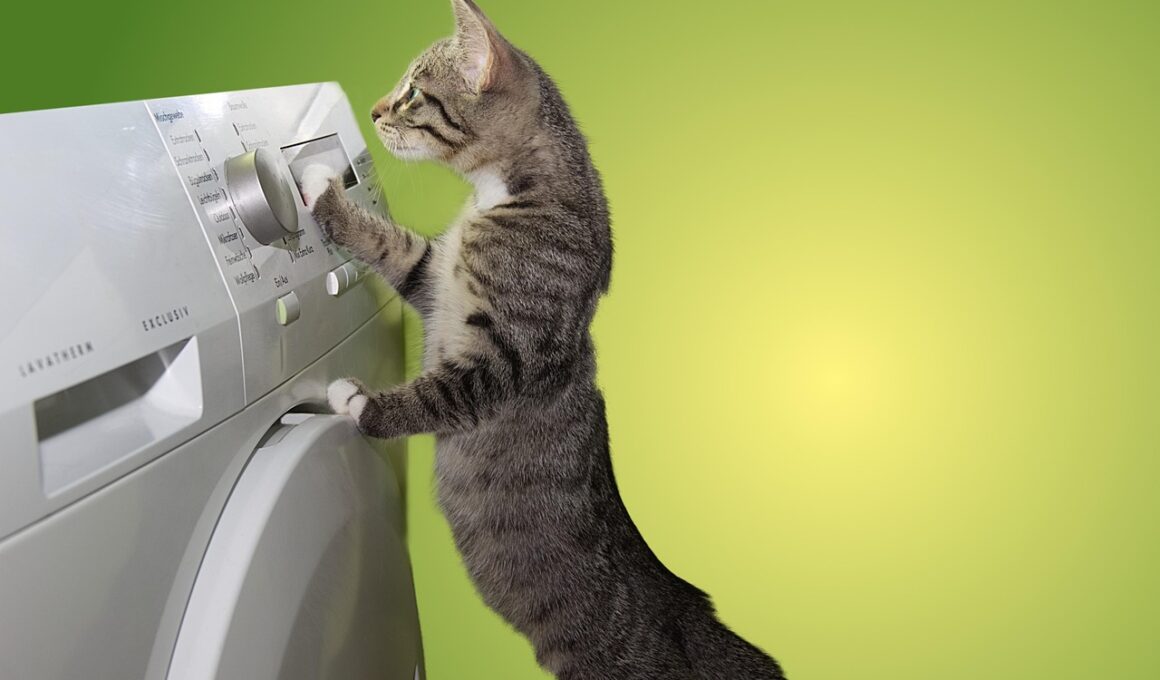How Multi-Cat Owners Can Manage Social Tensions Effectively
Owning multiple cats can be rewarding, yet it often brings challenges related to their social hierarchies. Cats are naturally territorial and can exhibit behaviors that lead to conflicts. Understanding their social dynamics is essential for ensuring a harmonious home. The first step is recognizing the signs of social tensions. Cats may hiss, growl, or even engage in aggressive behaviors due to fear or rivalry. Identifying these signals early can help in managing situations before they escalate. Your cats communicate using body language and vocalizations, which require observation to comprehend. A calm, assertive approach helps in maintaining order within the feline group. Cats thrive on routine, so establishing a predictable schedule for feeding and play can help mitigate tensions. Moreover, providing ample resources like litter boxes, scratching posts, and play areas can minimize competition and territorial disputes, creating a more peaceful environment. It’s vital that each cat has their own space to retreat and feel secure. If conflicts arise, separation techniques can be employed, allowing the cats to cool down and reintroduce them gradually. Effective management takes patience and understanding, fostering positive relationships among your furry companions.
Another effective way to manage social tensions is through structured introductions, particularly when bringing new cats into the household. Gradual introductions allow existing cats to adjust to new members without feeling threatened. Start by confining the new cat to a separate room while allowing the existing cats to get used to the new scent. After a few days, swap bedding between cats to encourage familiarity. Once they seem comfortable, supervised visits can help them understand each other without aggressive encounters. Make sure to monitor their interactions closely for any signs of stress or discomfort. Investing time in play sessions can foster positive associations between the cats, reinforcing bonding through shared activities. Providing vertical spaces like cat trees gives cats the option to assert their territory without confrontations. Additionally, using pheromone diffusers can create a calming environment, reducing anxiety and promoting tranquility among your cats. Remember to give each cat plenty of individual attention, ensuring they do not feel neglected during the adjustment phase. It is crucial to recognize that some cats take longer than others to adapt, so remain patient and allow them to set the pace for their relationships.
Utilizing Positive Reinforcement
Positive reinforcement is a powerful tool for managing social hierarchies among cats. Rewarding your cats for good behavior can help them learn how to interact positively with each other. Use treats or praise when they engage in friendly behavior or play together. Over time, they will begin to associate each other with positive experiences. Having a structured routine for playtime can also encourage social interactions. Incorporating interactive toys can foster a sense of teamwork, encouraging them to play together rather than competing for your attention. Gentle corrections when aggressive behaviors arise are essential. Redirecting their focus to a toy rather than letting them engage physically can prevent territorial disputes. Setting clear boundaries for unacceptable behavior ensures that all cats understand the rules. Regular breaks during play help prevent overstimulation that can lead to conflicts. If a conflict escalates to a point where one cat feels threatened, intervening calmly can help de-escalate the situation. Adopting a mindset of understanding and patience allows you to tailor your approach to each cat’s personality, building a stronger bond among them.
Another factor that influences social hierarchy among cats is their backgrounds and personalities. Cats with different past experiences may approach social interactions differently, establishing their dynamic within the group. For instance, a cat with a history of trauma may take longer to trust others. Recognizing these differences is crucial for promoting harmony among them. Consider the age of each cat, as younger ones often have a different energy level compared to older, more settled cats. Additionally, observing their natural instincts can help you understand their social positions better. Establishing individual behavior patterns will provide insight into their unique personalities. Monitoring play behavior can also inform how they interact during high-energy periods. Providing outlets for energy, such as engaging toys or play sessions, helps avoid territorial disputes that stem from frustration. Another approach is to adjust your home environment to accommodate their unique needs, such as creating individual spaces for resting, dining, or playing. These adjustments not only ease tensions but also enrich their overall quality of life in a multi-cat household.
Mental and Physical Stimulation
Ensuring that each cat receives ample mental and physical stimulation is crucial in managing social tensions. Boredom can lead to frustration and conflict, making it essential to engage their minds and bodies. Allocate playtime for each cat individually, allowing them to expend energy through activities they enjoy. This not only channels their energy positively but also prevents excess competition for resources. Puzzle feeders and interactive toys are excellent tools for maximizing mental engagement. Rotating these toys regularly keeps the play environment fresh and stimulating. Additionally, providing opportunities for exploration through cat trees or shelves gives them a safe space to roam. Cats enjoy activities that mimic hunting, so incorporating feather wands or laser pointers can engage their prey drive in a positive way. Moreover, providing scratching posts in multiple areas encourages them to express natural behaviors without initiating conflict. Observing their interests will help tailor their routine to include a variety of activities. At the same time, consider providing safe outdoor access to enhance their environment. Enrichment these options collectively reduce stress and help maintain a peaceful household atmosphere. When cats are happy, they are less likely to engage in aggressive behaviors.
Understanding your cats’ social structures is essential for nurturing a harmonious multi-cat environment. Each cat may exist within a certain social ranking, which influences their interactions. Regularly engaging with each cat helps you assess how they relate to each other and understand their dynamics. Look for behavioral cues indicating comfort or discomfort, which will guide your interventions. Develop a keen eye for changes in behavior that may indicate shifts in the social hierarchy, such as increased aggression or withdrawal. By noticing these changes promptly, you can intervene before issues escalate. Consider keeping a log of their interactions to better understand patterns over time. Gradually introducing new experiences can promote flexibility in social hierarchies, allowing cats to adjust to changes. Understanding that cats occasionally need their space is vital; forcing interactions can worsen social tensions. Scheduling quiet time into their routine allows them to relax. Ensure that you are also maintaining a stable environment at home, as stress may arise from changes in routine or physical space alterations. Consistency in both interactions and environment fosters trust and stability among your feline friends.
In Conclusion
In conclusion, managing social tensions in multi-cat households is achievable through awareness, patience, and consistent practices. Recognizing the unique personalities of each cat lays the groundwork for understanding their individual needs and social hierarchies. Implementing strategies such as gradual introductions when adding new cats, providing ample resources, and engaging them in activities can foster peaceful coexistence. Using positive reinforcement turns potentially negative interactions into opportunities for bonding. Monitor your cats regularly to spot early signs of conflict, allowing you to intervene before things escalate. Enhance their home environment with structured routines, enrichment activities, and safe spaces for each cat to retreat. A calm approach and dedication to stress reduction will create an atmosphere conducive to positive relationships. Ultimately, every cat’s personality can thrive in a loving multi-cat home where their needs are respected, and social tensions are managed effectively.
Embracing the journey of multi-cat ownership requires commitment and adaptability. Each cat may navigate their interactions differently based on their experiences, so remember to remain observant and flexible in your management techniques. With the right practices, your multi-cat household can flourish into a space where all felines feel secure, loved, and valued. This understanding will bring joy to their lives and yours as you cultivate a nurturing ecosystem where every cat can thrive.


